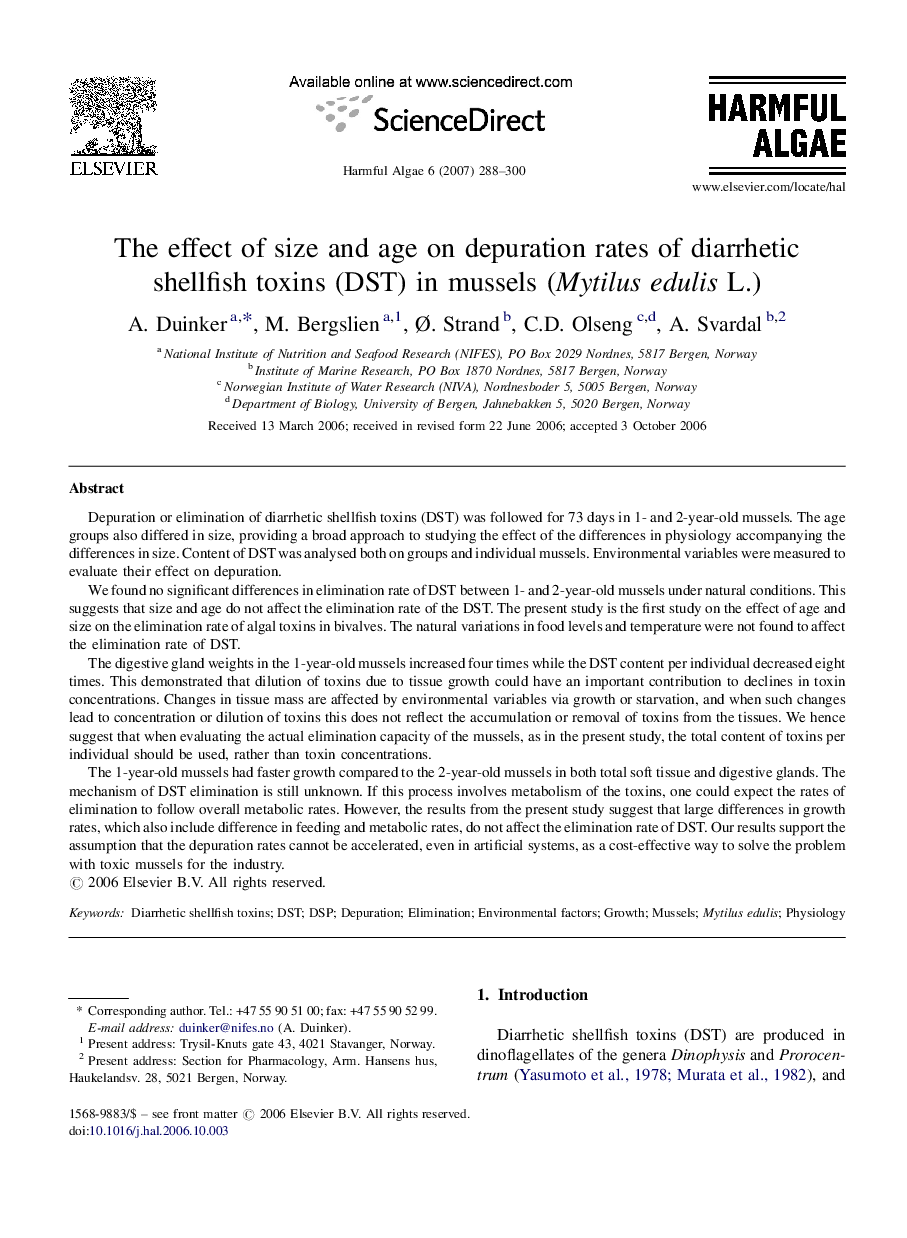| Article ID | Journal | Published Year | Pages | File Type |
|---|---|---|---|---|
| 4546262 | Harmful Algae | 2007 | 13 Pages |
Depuration or elimination of diarrhetic shellfish toxins (DST) was followed for 73 days in 1- and 2-year-old mussels. The age groups also differed in size, providing a broad approach to studying the effect of the differences in physiology accompanying the differences in size. Content of DST was analysed both on groups and individual mussels. Environmental variables were measured to evaluate their effect on depuration.We found no significant differences in elimination rate of DST between 1- and 2-year-old mussels under natural conditions. This suggests that size and age do not affect the elimination rate of the DST. The present study is the first study on the effect of age and size on the elimination rate of algal toxins in bivalves. The natural variations in food levels and temperature were not found to affect the elimination rate of DST.The digestive gland weights in the 1-year-old mussels increased four times while the DST content per individual decreased eight times. This demonstrated that dilution of toxins due to tissue growth could have an important contribution to declines in toxin concentrations. Changes in tissue mass are affected by environmental variables via growth or starvation, and when such changes lead to concentration or dilution of toxins this does not reflect the accumulation or removal of toxins from the tissues. We hence suggest that when evaluating the actual elimination capacity of the mussels, as in the present study, the total content of toxins per individual should be used, rather than toxin concentrations.The 1-year-old mussels had faster growth compared to the 2-year-old mussels in both total soft tissue and digestive glands. The mechanism of DST elimination is still unknown. If this process involves metabolism of the toxins, one could expect the rates of elimination to follow overall metabolic rates. However, the results from the present study suggest that large differences in growth rates, which also include difference in feeding and metabolic rates, do not affect the elimination rate of DST. Our results support the assumption that the depuration rates cannot be accelerated, even in artificial systems, as a cost-effective way to solve the problem with toxic mussels for the industry.
